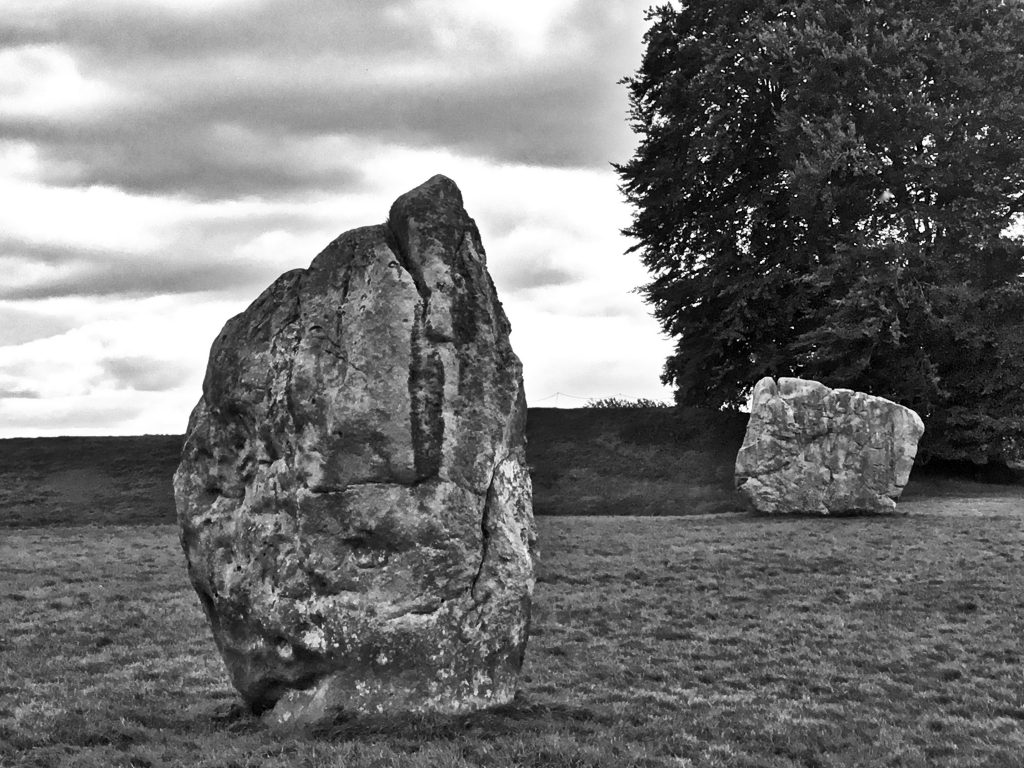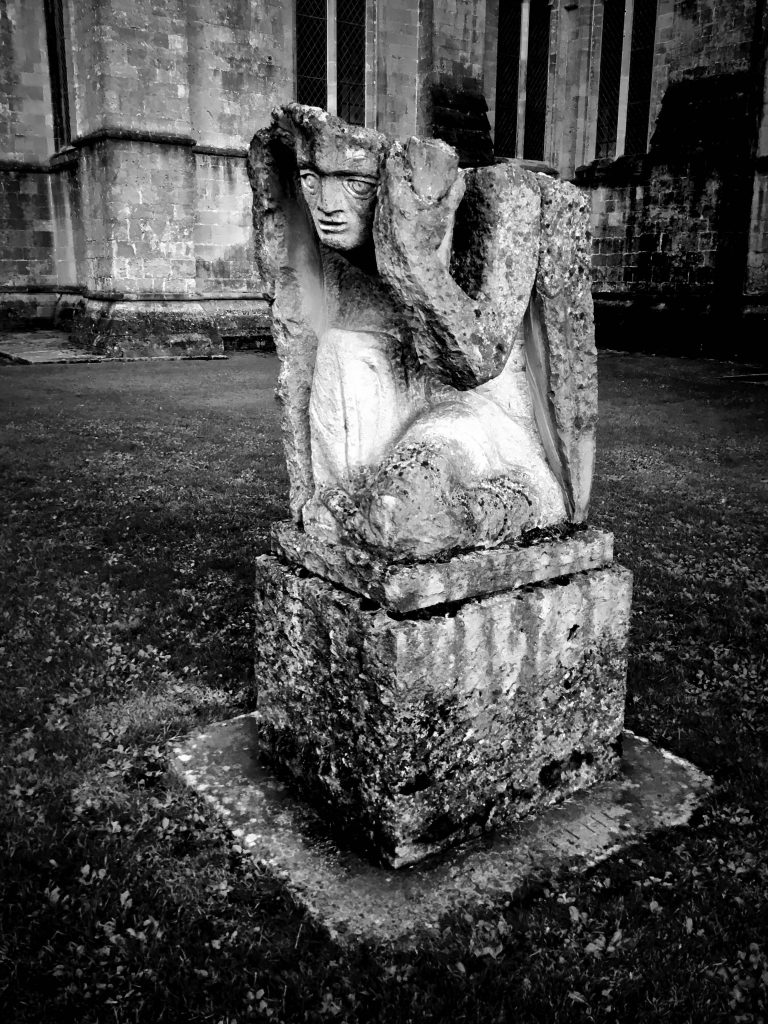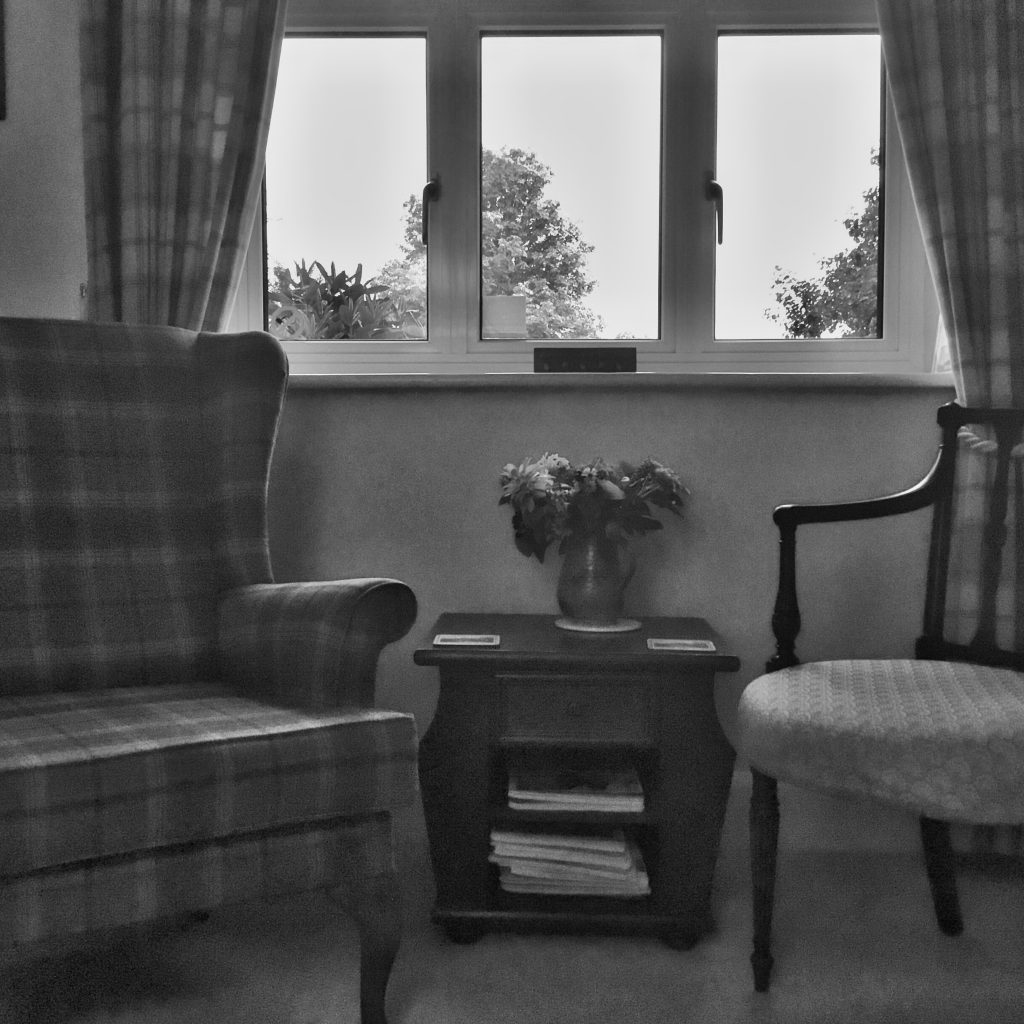
Walking the Common: An English Journey in Image and Poem
From September 14 to October 4, 2017 my wife Susan Ilsley and I set out on a journey of sharing and self discovery to explore ancestral ground in England. Of particular attention in these visits was understanding the historical underpinnings—prehistory through present—of current social conditions and forms. We were interested in not only historical cross cultural influences, but also the effect of these backgrounds upon the current art and spiritual expression in these communities and those influences in our own culture and personal lives.
Our visit to the Midlands, Cotswolds, and the West was enhanced by stays in AirBnB’s, usually in family homes, and walking paths where we were able to meet and converse with locals who shared their personal points of view. These conversations provided rich context for our exploration. Along the way we took pictures with iPhone and wrote on an iPad small enough to carry in a day pack. The writing includes prose poems, haiku and tanka forms, often bound together as Haibun following the form developed by Matsuo Basho in 17th century Japan. The images and poems are juxtaposed, intended to be experienced together. While the images and writing are not intended as illustration or explanation of each other, they both point in a similar direction and enhance dimension.
These photographs and poems were exhibited at Buddhamouse in November, 2017 and a total of 22 photos with poems are being arranged for book publication in 2019.
Old
Elizabeth was the first to really teach me about British History. After visiting Salisbury Cathedral and on our way to a consulting job I pointed at some Tudor houses we passed and allowed that I thought they looked quite old. “Naw,” she said. “Hardly old.” We went on and the same exchange occurred as we went by some clearly medieval buildings. When we passed Stonehenge. I said, “Oh, that’s what you mean by old.” She was silent. We stopped at Avebury, the town intersected by a huge stone circle and prehistoric embankments. “Goodness,” I exclaimed. “How old are these?” She looked about. “I’d say roughly 5 thousand years.’ I was quiet.
We got back on the highway, and soon passed a green hill. It turned out to be Silbury Hill, an artificial chalk mound thought to have been build several hundred years before Avebury. “Now that’s old,” opined Elizabeth.
Silbury’s green grass
rich dirt smells fresh on warm breeze.
Wonder where it’s been?
First Chapel, Westminster Abbey, 2017
When the Christians got to Britain, they occupied the islands nearly 400 years before breaking from Rome adding to the uneasy mix of local clusters of pagan and roman beliefs. An integral part of British political struggles, the church has not just become part of the landscape, it has constructed it.
In Egypt, some Christians left Abbeys to avoid Roman institutionalization. They became hermits, going back underground in the desert mountain heat to get closer to God. We call them saints.
Light turning dark
cold wind blowing out candles.
How do I get closer?
Others coming to visit
ask “How do I get closer?”
Adaptation
At Wells, Gothic architecture was given full reign. Named for it’s famous artesian springs the site had been occupied by countless generations as village site, hunting grounds and spiritual space. Built over a Saxon church no doubt built over earlier sacred places, the Cathedral was expanded to include massive towers, high ceilings and brilliant statuary. When this imposing edifice began to settle on one side, massive reversed internal arches were employed to strengthen the walls. It worked dramatically, not only structurally but aesthetically. The walls remain true seven centuries later having survived Reformation, civil war, and a myriad of social transformations.
Entering this space
walls tell stories of lives past
resonate with song.
What sense has brought us this far,
and how about tomorrow?
World Awry
The Cathedral of St. Andrew at Wells has been conducting religious celebrations since 700 B.C. During that one thousand year stretch it was periodically added to and extended. As the Bishopric of Bath and Wells it became known for it’s extravagant ceremonies. In the middle 1300’s Bishop Ralph of Shrewsbury imposed citizen taxes to pay for building grand structures within and adjacent to the Cathedral to accommodate an expanding paid staff and choir. Unpopular in the town, he responded by constructing a moat and walls complete with drawbridge. And when the Reformation came the mob swept onto the grounds of the Wells Cathedral breaking the rare stain glass windows and beheading statuary. Pieces were left standing otherwise intact and remain so to this day.
Stone blocks reaching up
cloud casts shadow overhead
Jackdaws fly away.
We stand aghast at past deeds:
heaven remains out of reach.
In Praise of Cute
Tidy lives, easy to defend, harder to live. It’s temping to go for drama, bold gesture and radical posture. After all, where’s the cache in neat? Artists, poets, revolutionaries and geniuses scoff at the well tempered life as being scarcely lived; that life unlived is that much died. Yet impulse can lead to scatter, exploration to wandering lost. The British Cotswolds, a set of picturesque villages stretching a hundred miles down the Midlands through lovely rolling hills were at one time the center of a vital wool industry that drove growth, stability and construction. When cotton arrived from India and the new world economic depression set in leaving tiny historical time-capsules. Lucky for them and us as the tiny villages are now prime destinations for both travelers from abroad and Londoners seeking respite. While more urban settings suffer from postmodern industrial assault to senses and sense of self, the Cotswolds strive to protect that which draws a quieter customer.
Limestone walls unchanged
wool cathedrals village squares
clustered cottages,
we seeking comfort gather
for tea biscuit communion.
Goes Nowhere
A National Trust protects “Lands of Outstanding Natural Beauty in the middle of England. Walking trails abound winding through Medieval villages, farmlands and woods. Footpaths cross private land. Strict building and business regulations retain its character in a world where that is rare. It is a place in praise of local.
Evening Cotswold walk
see for miles from top of hill.
Sign reads “Goes Nowhere.”





